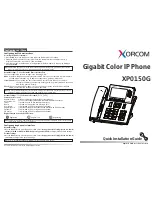
High-Level process flow
Issue 3.4.1 June 2005
375
Test and validation
After the risk level of the potential change has been assessed, the appropriate amount of testing
and validation can be applied.
Table 86: Testing and validation recommendations
demonstrates
how testing and validation may be applied to the five-level risk model.
For changes with risk levels 1 through 3, two types of laboratory validation are important:
●
Feature and functionality testing
●
What-if analysis
Feature and functionality testing
Feature and functionality testing requires that you validate all configurations, modules, and
software with laboratory-generated traffic to ensure that the solution can handle the expected
traffic requirements. Create a test plan that validates configuration parameters, software
functionality, and hardware performance. Be sure to test behavior under real-world conditions,
including spanning-tree changes, default gateway changes, routing changes, interface flaps,
and link changes. Also validate the security and network management functions of the new
solution.
Table 86: Testing and validation recommendations
Risk level
Recommendations
1
Requires laboratory validation of the new solution, including
documented testing, validation, and what-if analysis showing the
impact to existing infrastructure; completion of an operations support
document, backout plan, and implementation plan; and adherence to
the change process. Recommend solution pilots and a preliminary
design review prior to testing.
2
Requires laboratory what-if analysis to determine the impact to the
existing environment with regard to capacity and performance; test
and review of all routing changes; backout plan, implementation plan,
and adherence to change process; and design review for major
routing changes or backbone changes.
3
Requires engineering analysis of the new solution, which may require
laboratory validation; implementation plan and adherence to change
process.
4
Requires implementation plan and adherence to change process.
5
Optional adherence to change process.
Summary of Contents for Application Solutions
Page 1: ...Avaya Application Solutions IP Telephony Deployment Guide 555 245 600 Issue 3 4 1 June 2005 ...
Page 20: ...About This Book 20 Avaya Application Solutions IP Telephony Deployment Guide ...
Page 21: ...Issue 3 4 1 June 2005 21 Section 1 Avaya Application Solutions product guide ...
Page 22: ...22 Avaya Application Solutions IP Telephony Deployment Guide ...
Page 106: ...Call processing 106 Avaya Application Solutions IP Telephony Deployment Guide ...
Page 124: ...Avaya LAN switching products 124 Avaya Application Solutions IP Telephony Deployment Guide ...
Page 139: ...Issue 3 4 1 June 2005 139 Section 2 Deploying IP Telephony ...
Page 140: ...140 Avaya Application Solutions IP Telephony Deployment Guide ...
Page 186: ...Traffic engineering 186 Avaya Application Solutions IP Telephony Deployment Guide ...
Page 204: ...Security 204 Avaya Application Solutions IP Telephony Deployment Guide ...
Page 228: ...Avaya Integrated Management 228 Avaya Application Solutions IP Telephony Deployment Guide ...
Page 274: ...Reliability and Recovery 274 Avaya Application Solutions IP Telephony Deployment Guide ...
Page 275: ...Issue 3 4 1 June 2005 275 Section 3 Getting the IP network ready for telephony ...
Page 276: ...276 Avaya Application Solutions IP Telephony Deployment Guide ...
Page 356: ...Network recovery 356 Avaya Application Solutions IP Telephony Deployment Guide ...
Page 366: ...Network assessment offer 366 Avaya Application Solutions IP Telephony Deployment Guide ...
Page 367: ...Issue 3 4 1 June 2005 367 Appendixes ...
Page 368: ...Appendixes 368 Avaya Application Solutions IP Telephony Deployment Guide ...
Page 394: ...Access list 394 Avaya Application Solutions IP Telephony Deployment Guide ...
Page 414: ...DHCP TFTP 414 Avaya Application Solutions IP Telephony Deployment Guide ...
















































